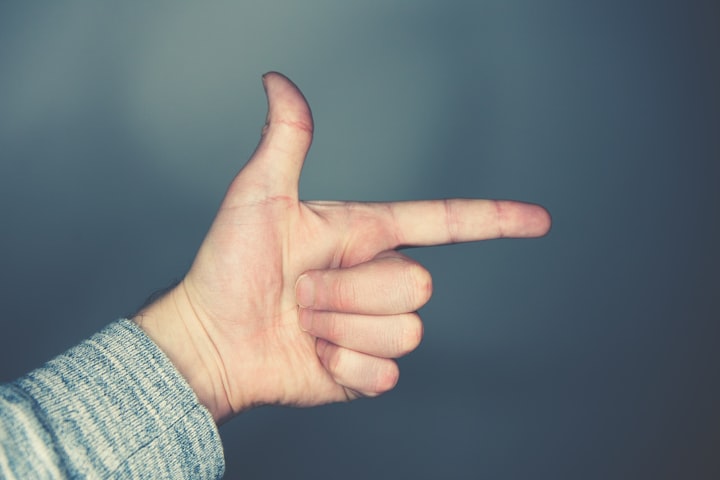
If you see a person's arm, you've probably seen muscle. Well, what about fingers? Have you ever seen a human finger with muscles? Maybe the fingers don't have muscles? So how are fingers able to lift all sorts of things if they don't have muscles? Check out the reviews here.
Is it true that fingers have no muscles?
Muscle is a tool for human beings to be active. Without muscles, humans cannot move their hands, feet, and other bones freely. But what about fingers? It's true that fingers don't have muscles even if they can move .
Fingers work well even without muscles. That's because even though there are no muscles in the fingers, there are 34 muscles in the palm and forearm (from the elbow to the wrist) that make the fingers work so well.
Make the muscles of your fingers do all sorts of things. For example, opening a door, clapping, pointing, shaking hands, carrying a bag, playing with a mobile phone, etc.
The structure of the fingers and palm is very complex. Each hand has 27 bones and many joints. The total number of bones in the hands accounts for almost a quarter of the bones in the whole body.
How do fingers move?
How do humans type, play the piano, and do things with their fingers? All focus on the brain. The muscles in the palm and forearm only work when the brain tells them to do so. In fact, many important things have to be done by hand. In fact, about a quarter of the brain is tasked with controlling the muscles in the hand to move the fingers.
The brain sends messages to the nerves that connect to the muscles in the palm and forearm. The message tells certain muscles to tighten and others to relax. This allows the desired movement to occur.
The muscles of the palm and forearm attach to tendons. This tendon connects each muscle to certain bones in the finger. Tendon is a strong connective tissue that binds muscle and bone. This tendon finally moves the finger on your command.
When a muscle contracts, the muscle pulls on the tendon, which then pulls on the bone and moves the muscle. So, in a simple way, the brain commands the nerves in the palm to move the tendons and bones in the fingers.
What nerves connect to the hand to move the fingers?
There are two main nerves (yellow in the picture below) that move your fingers, the median and ulnar nerves. The median nerve leads to the thumb, index finger, middle finger, and part of the ring finger. While the ulnar nerve is the part of the nerve that carries information from the brain to move the little finger, it's the half of the ring finger. Below is a picture of the fingers and nerves responsible for transmitting information.
For example, to move the little finger, the brain will send a message to the ulnar nerve, which will then contract the muscles in the palm of the hand, causing it to move the tendons in the little finger. Until finally the little finger will move.
Each finger has a joint that can move
Each finger also has the ability to move, even though it doesn't move widely in any direction. Each finger has 3 bones, except the thumb which only has 2 bones.
There is a joint between the bones. It is this joint that allows the fingers to move. The joints between the phalanges can only move one way, bend and extend or bend and straighten. This means the fingers can only be moved and then straightened.
If you move your finger, you can only bend in one direction and come back straight again, right? Well, that's what bending and straightening means.
Especially for the thumb, in addition to flexing and extending, the joint can also move more freely than other fingers.
Try to feel the muscles as you move your fingers
Align your hands forward, palms facing down, fingers stretched still. Then, keep your hands in an upright position while clenching your fists. Do you feel like any muscle movement is drawn to your lower arms? Well, this is a sign that the fingers are being moved by muscles outside the fingers.
If you see a person's arm, you've probably seen muscle. Well, what about fingers? Have you ever seen a human finger with muscles? Maybe the fingers don't have muscles? So how are fingers able to lift all sorts of things if they don't have muscles? Check out the reviews here.
Is it true that fingers have no muscles?
Muscle is a tool for human beings to be active. Without muscles, humans cannot move their hands, feet, and other bones freely. But what about fingers? It's true that fingers don't have muscles even if they can move .
Fingers work well even without muscles. That's because even though there are no muscles in the fingers, there are 34 muscles in the palm and forearm (from the elbow to the wrist) that make the fingers work so well.
Make the muscles of your fingers do all sorts of things. For example, opening a door, clapping, pointing, shaking hands, carrying a bag, playing with a mobile phone, etc.
The structure of the fingers and palm is very complex. Each hand has 27 bones and many joints. The total number of bones in the hands accounts for almost a quarter of the bones in the whole body.
How do fingers move?
How do humans type, play the piano, and do things with their fingers? All focus on the brain. The muscles in the palm and forearm only work when the brain tells them to do so. In fact, many important things have to be done by hand. In fact, about a quarter of the brain is tasked with controlling the muscles in the hand to move the fingers.
The brain sends messages to the nerves that connect to the muscles in the palm and forearm. The message tells certain muscles to tighten and others to relax. This allows the desired movement to occur.
The muscles of the palm and forearm attach to tendons. This tendon connects each muscle to certain bones in the finger. Tendon is a strong connective tissue that binds muscle and bone. This tendon finally moves the finger on your command.
When a muscle contracts, the muscle pulls on the tendon, which then pulls on the bone and moves the muscle. So, in a simple way, the brain commands the nerves in the palm to move the tendons and bones in the fingers.
What nerves connect to the hand to move the fingers?
There are two main nerves (yellow in the picture below) that move your fingers, the median and ulnar nerves. The median nerve leads to the thumb, index finger, middle finger, and part of the ring finger. While the ulnar nerve is the part of the nerve that carries information from the brain to move the little finger, it's the half of the ring finger. Below is a picture of the fingers and nerves responsible for transmitting information.
For example, to move the little finger, the brain will send a message to the ulnar nerve, which will then contract the muscles in the palm of the hand, causing it to move the tendons in the little finger. Until finally the little finger will move.
Each finger has a joint that can move
Each finger also has the ability to move, even though it doesn't move widely in any direction. Each finger has 3 bones, except the thumb which only has 2 bones.
There is a joint between the bones. It is this joint that allows the fingers to move. The joints between the phalanges can only move one way, bend and extend or bend and straighten. This means the fingers can only be moved and then straightened.
If you move your finger, you can only bend in one direction and come back straight again, right? Well, that's what bending and straightening means.
Especially for the thumb, in addition to flexing and extending, the joint can also move more freely than other fingers.
Try to feel the muscles as you move your fingers
Align your hands forward, palms facing down, fingers stretched still. Then, keep your hands in an upright position while clenching your fists. Do you feel like any muscle movement is drawn to your lower arms? Well, this is a sign that the fingers are being moved by muscles outside the fingers.






Comments
There are no comments for this story
Be the first to respond and start the conversation.